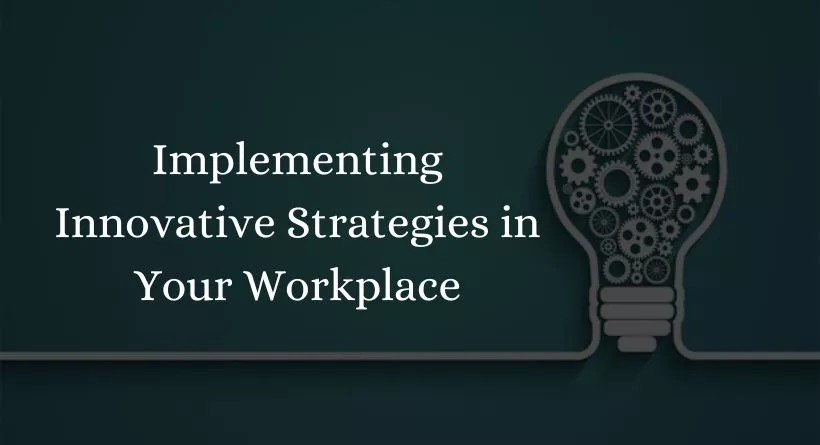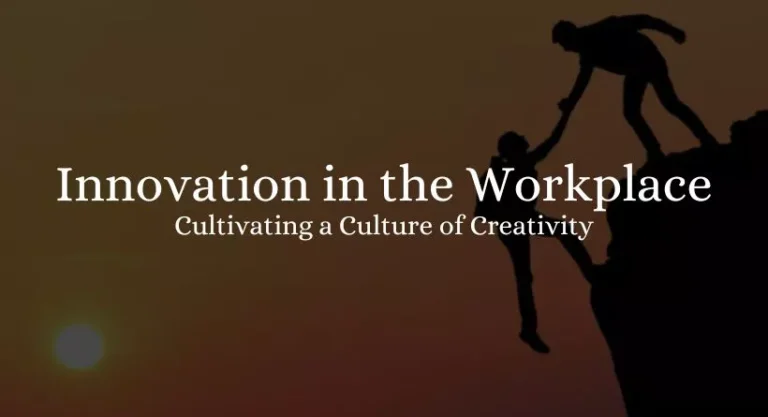In the dynamic world of business, it’s no secret that “workplace innovation” is the buzzword of the hour. But what does it really mean, and why is it becoming increasingly significant? The issue at hand is this: many companies struggle to infuse creativity and innovation in their workplace culture. Perhaps you find yourself battling the same challenge, eager to create a culture of innovation but feeling stifled, unsure of where to start. Let’s not dismiss this issue – it’s real, prevalent, and impacts both small and large enterprises alike.
This blog post is set to bring you the much-needed relief, the solution to your problem. We are going to walk you through a comprehensive approach to cultivating a culture of creativity and innovation in your workplace. This approach will give you a practical, real-world perspective of how organizations have successfully created environments that foster creativity and drive innovation.
From reimagining the workspace to empowering your teams, from introducing innovation management tools to instigating thought-provoking dialogue, this journey will explore a variety of facets that contribute to a creative culture. This post promises not just to discuss the problem but to provide you with actionable insights to kickstart your journey towards a more innovative workplace.
The Importance of Innovation in the Workplace
A creative, innovative workplace isn’t just a nice-to-have—it’s a must-have. Creative thinking and innovation are vital to business growth. They allow your company to stay ahead of the curve, continuously improve your products, and offer unique solutions to your customers. When your team is encouraged to think creatively, you’re essentially tapping into a wellspring of fresh, transformative ideas.
Let’s take Google, a quintessential example of an innovative company. Known for its disruptive ideas, Google has consistently proven that fostering a culture of innovation is a winning strategy. From its search engine to Google Maps and beyond, Google’s success is a testament to the power of creative thinking.
Key Factors in Cultivating a Culture of Innovation
So, how can you bring this innovation into your own workplace? Here are some fundamental factors to consider.
- Workspace Design: The physical environment can significantly impact creativity. Companies like Pixar and Airbnb, known for their innovative workspaces, have used this to their advantage. An open layout encouraging collaboration or quiet nooks for deep work can spur new ideas.
- Empowering Teams: Trusting your team with autonomy and valuing their ideas can create a fertile ground for innovation. Remember, your team is a treasure trove of diverse perspectives and experiences. Let them lead initiatives, and you’ll be surprised by their creativity.
- Innovation Management Tools: Tools can streamline the process of idea generation, evaluation, and implementation. Consider implementing these tools in your workplace to facilitate innovative thinking.
Implementing Innovative Strategies in Your Workplace

Creating a culture of innovation requires strategic planning and commitment. Here’s how you can foster this environment.
- Nurture a Creative Mindset: Encourage your employees to think differently. Provide them with resources for learning and create opportunities for brainstorming. A mindset shift is often the first step towards innovation.
- Leadership Role: As a leader, your attitude towards risk and innovation matters. Leaders who encourage and reward innovative thinking create an atmosphere where creativity thrives.
- Open Dialogue and Idea-sharing: Promote transparency and encourage discussions. An open platform where employees can freely share their ideas can lead to breakthroughs.
Case Study: Successful Innovation Cultures
To better understand, let’s look at a case study. The technology giant, Apple, is renowned for its innovation culture. Apple’s success can be attributed to its willingness to break conventions, its high design standards, and its focus on user experience.
From this, we can gather a valuable lesson. Innovation isn’t just about technology—it’s about creating value for users, solving problems creatively, and daring to be different. Now that you’ve seen how the titans do it, it’s time to apply these lessons to your own workplace.
May Also Like Reading: The Art of Negotiation: Techniques for Successful Deals 2023
Conclusion
In conclusion, cultivating a culture of creativity and innovation in the workplace is not just an option—it’s a necessity for long-term growth. We’ve understood its importance, observed the strategies employed by successful companies, and recognized the significance of creative spaces, empowered teams, and the right set of tools. The path to innovation requires nurturing a creative mindset, supportive leadership, and encouraging open dialogue.
Creating an innovative culture might seem like a formidable task, but remember, it’s a journey. Every step you take towards fostering creativity in your workplace brings you one step closer to sustained growth, groundbreaking ideas, and a thriving team. Embrace the challenge, and you might just be surprised by what you and your team can achieve. After all, the future belongs to those who dare to innovate!







